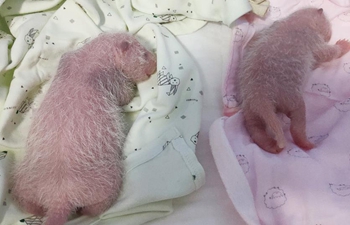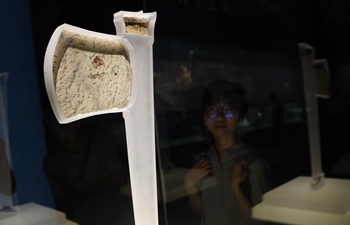LONDON, July 17 (Xinhua) -- London's house sparrows have plummeted by 71 percent since 1995 and new research concludes that avian malaria could be behind it.
Almost 75 percent of house sparrows in London are carriers of avian malaria, more than any other bird population in northern Europe, an academic study showed Wednesday.
The sudden decline of the iconic sparrows led a team from Zoological Society of London(ZSL), the Royal Society for the Protection of Birds(RSPB), the British Trust for Ornithology (BTO) and the University of Liverpool and wildlife charities to investigate if parasite infections were involved.
Researchers, who collected data at sites across London, centered around a single breeding colony and spaced at least four kilometers apart to ensure birds from different groups didn't cross-breed. On average, 74 percent of sparrows carried the avian malaria, a strain that only affects birds, though in some colonies the figure was as high as 100 percent.
"House sparrow populations have declined in many towns and cities across Europe since the 1980s. This new research suggests that avian malaria may be implicated in the loss of house sparrows across London. Exactly how the infection may be affecting the birds is unknown. Maybe warmer temperatures are increasing mosquito numbers, or the parasite has become more virulent." said Dr. Will Peach from the RSPB.
"Parasitic infections are known to cause wildlife to decline elsewhere and our study indicates that this may be happening with the house sparrow in London," said former ZSL Institute of Zoology researcher Dr. Daria Dadam who now works for the BTO.
According to a ZSL spokesman, avian malaria is most commonly caused by a parasite called Plasmodium relictum. "In a similar way to human malaria, it is spread only by mosquitos which transfer the parasite to healthy birds when they feed."
Professor Andrew Cunningham, deputy director of science at the ZSL, also found that infection intensity was significantly higher in young birds in the declining populations with fewer of the sparrows monitored in those groups surviving from year to year.













